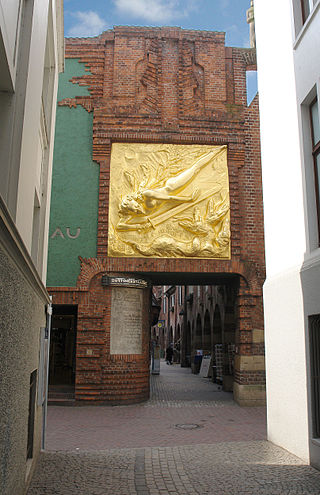
Kraft Dinner in Canada, Kraft Mac & Cheese in the United States, Australia and New Zealand, Mac and Cheese in the United Kingdom and internationally, is a nonperishable, packaged macaroni and cheese mix. It is made by Kraft Foods Group and traditionally cardboard-boxed with dried macaroni pasta and a packet of processed cheese powder. It was introduced under the Kraft Dinner name simultaneously in both Canada and the U.S. in 1937. The brand is particularly popular with Canadians, who consume 55% more boxes per capita than Americans.

Maxwell House is an American brand of coffee manufactured by a like-named division of Kraft Heinz in North America and JDE Peet's in the rest of the world. Introduced in 1892 by wholesale grocer Joel Owsley Cheek, it was named in honor of the Maxwell House Hotel in Nashville, Tennessee, which was its first major customer. For nearly 100 years, until the late 1980s, it was the highest-selling coffee brand in the United States. The company's slogan is "Good to the last drop," which is often incorporated into its logo and is printed on its labels.
Decaffeination is the removal of caffeine from coffee beans, cocoa, tea leaves, and other caffeine-containing materials. Decaffeinated products are commonly termed by the abbreviation decaf. Decaffeinated drinks contain typically 1–2% of the original caffeine content, but sometimes as much as 20%.
Post Consumer Brands, LLC is an American consumer packaged goods food manufacturer headquartered in Lakeville, Minnesota.

Gevalia is a coffee brand originating from Gävle, Sweden. Founded in 1853, it has grown to become the largest coffee roastery in Scandinavia. The brand name "Gevalia" is derived from the Latin name for Gävle.
Cafédirect is a UK-based alternative trading organisation.

American tea culture encompasses the methods of preparation and means of consumption of tea within the context of the culture of the United States. About 85% of the tea consumed in the United States is served cold, usually as iced tea.

Alois Dallmayr, usually abbreviated to Dallmayr, is the largest delicatessen business in Europe and one of the best-known German coffee brands: The company has a history of over 300 years and is still in family ownership today. The corporate group has meanwhile been divided into four business units: "Delicatessen and Gastronomy", "Party & Catering," "Coffee & Tea" and finally "Vending & Office".

Kraft Foods Inc. was a multinational confectionery, food and beverage conglomerate. It marketed many brands in more than 170 countries. Twelve of its brands annually earned more than $1 billion worldwide: Cadbury, Jacobs, Kraft, LU, Maxwell House, Milka, Nabisco, Oreo, Oscar Mayer, Philadelphia, Trident, and Tang. Forty of its brands were at least a century old.

Ludwig Roselius was a German coffee merchant and founder of the company Kaffee HAG. He was born in Bremen and is credited with the development of commercial decaffeination of coffee. As a patron, he supported artists like Paula Modersohn-Becker and Bernard Hoetger and turned the Böttcherstrasse street in Bremen into an artwork.

Nabob is a brand of coffee produced by Kraft Foods and sold in Canada since 1896. Nabob produces several different blends of coffee which are available in a typical Canadian supermarket.

Bernhard Hoetger was a German sculptor, painter and handicrafts artist of the Expressionist movement.
Luzianne is the brand name for a line of Southern beverages and packaged goods, of which Luzianne coffee and iced tea products are the best known. Although most Luzianne products are available throughout the country, the popularity of the brand rests mainly in the Southern United States. Products carrying the Luzianne brand name are manufactured by the Reily Foods Company, which has its headquarters in New Orleans, Louisiana. In 2017, Luzianne was the second largest seller of tea in the United States, with annual sales of over $200 million.
Eight O'Clock Coffee is an American brand of coffee products currently manufactured by the Eight O'Clock Coffee Company, of North Bergen, New Jersey, a subsidiary of Tata Consumer Products; its coffee production plant is in Landover, Maryland. It has owned Eight O'Clock Coffee since 2006.

Böttcherstraße is a street in the historic centre of Bremen, Germany. Only about 100 m (330 ft) long, it is famous for its unusual architecture and ranks among the city's main cultural landmarks and visitor attractions. Most of its buildings were erected between 1922 and 1931, primarily as a result of the initiative of Ludwig Roselius, a Bremen-based coffee-trader, who charged Bernhard Hoetger with the artistic supervision over the project. The street and its buildings are a rare example of an architectural ensemble belonging to a variant of the expressionist style. Several of the houses can be classed as Brick Expressionism. Since 1973, the ensemble has been protected by the Monument Protection Act.
High Point was a brand of instant decaffeinated coffee marketed and distributed by The Folger Coffee Company, a subsidiary of Procter & Gamble. The production technique was created by Dennis Grubbs, an employee of Procter & Gamble at the time. It was introduced on a test basis in 1975. In 1980, the product was launched nationally as a competitor to Kraft Foods' Sanka.

Café HAG is a worldwide brand of decaffeinated coffee currently owned by JDE Peet's.

A Twosome Place (Korean: 투썸플레이스), is a premium dessert cafe and coffee franchise in South Korea. It was founded in 2002 in Sinchon and operates more than 1,640 stores nationwide as of the end of 2023. After launching the franchise business in 2008, CJ Foodville's coffee division was spun off and incorporated in February 2018, and was acquired by US private equity firm Carlyle Group in 2021.
Pressa was an International Press Exhibition held in Cologne between May and October, 1928.













